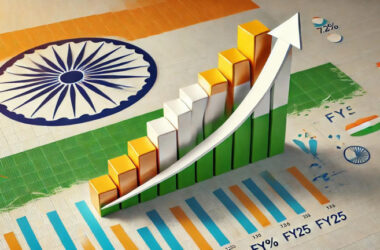
India’s Wholesale Price Index (WPI) inflation for the month of March has decreased to 1.34%, as per recent data released by the Ministry of Commerce and Industry. This marks a significant drop from the previous month’s WPI inflation rate of 4.17%, and is the lowest recorded inflation rate in six months.
The primary reason for the decrease in WPI inflation was a fall in fuel and power prices, which saw a decline of 4.5% in March. This was driven by a decrease in crude oil prices, which fell by around 5% during the month. In addition, food inflation also slowed down to 2.32% in March, as compared to 3.87% in February.
The drop in WPI inflation is a positive sign for India’s economy, as it is likely to ease the pressure on both producers and consumers. Lower inflation rates can provide a boost to consumer spending, as it reduces the cost of goods and services, which in turn can lead to higher demand and improved economic growth.
However, it is important to note that the WPI inflation rate only measures changes in the price of goods at the wholesale level, and does not reflect the actual prices paid by consumers. In addition, the Consumer Price Index (CPI) inflation rate, which measures changes in the prices paid by consumers, remains higher at 5.52% for March.
“Although the decline in WPI inflation is a positive development, it is important to note that the CPI inflation rate remains high,” said Anil Kumar, an economist. “This suggests that the pressure on consumers is still significant, and there is a need for further policy measures to address this.”
The Reserve Bank of India (RBI) has been closely monitoring the inflation rate in recent months, and has implemented several measures to support the economy during the COVID-19 pandemic. The central bank has cut interest rates to historic lows and implemented a range of measures to support liquidity and credit availability in the economy.
“The RBI’s monetary policy measures have been instrumental in supporting the Indian economy during this difficult time,” said Kumar. “However, there is still more that needs to be done to address the challenges posed by the pandemic and its impact on the economy.”
Despite the challenges posed by the pandemic, there are signs that India’s economy is recovering. The government has implemented several measures to support businesses and boost consumer demand, including a range of stimulus packages and tax incentives. The manufacturing sector, in particular, has seen a revival with investments in new projects and plans to expand existing ones. This is encouraging news for the economy overall and will be beneficial to many industries within it. However, there are still areas of concern that need to be addressed if we are to ensure a sustained recovery from the crisis.
However, there are still several challenges that need to be addressed in order to sustain the economic recovery. In addition to inflation, there are concerns about rising unemployment, a slowdown in consumer demand, and a fragile global economic environment.
“The drop in WPI inflation is a positive development, but we need to remain cautious about the outlook for the Indian economy,” said Kumar. “There are still significant challenges ahead, and it is important that the government and policymakers remain focused on addressing these.”
Overall, the drop in WPI inflation for March is a positive sign for India’s economy, and suggests that the country is moving in the right direction. However, it is important that policymakers continue to implement measures to support the economy, and address the challenges posed by the pandemic and the broader economic environment.









